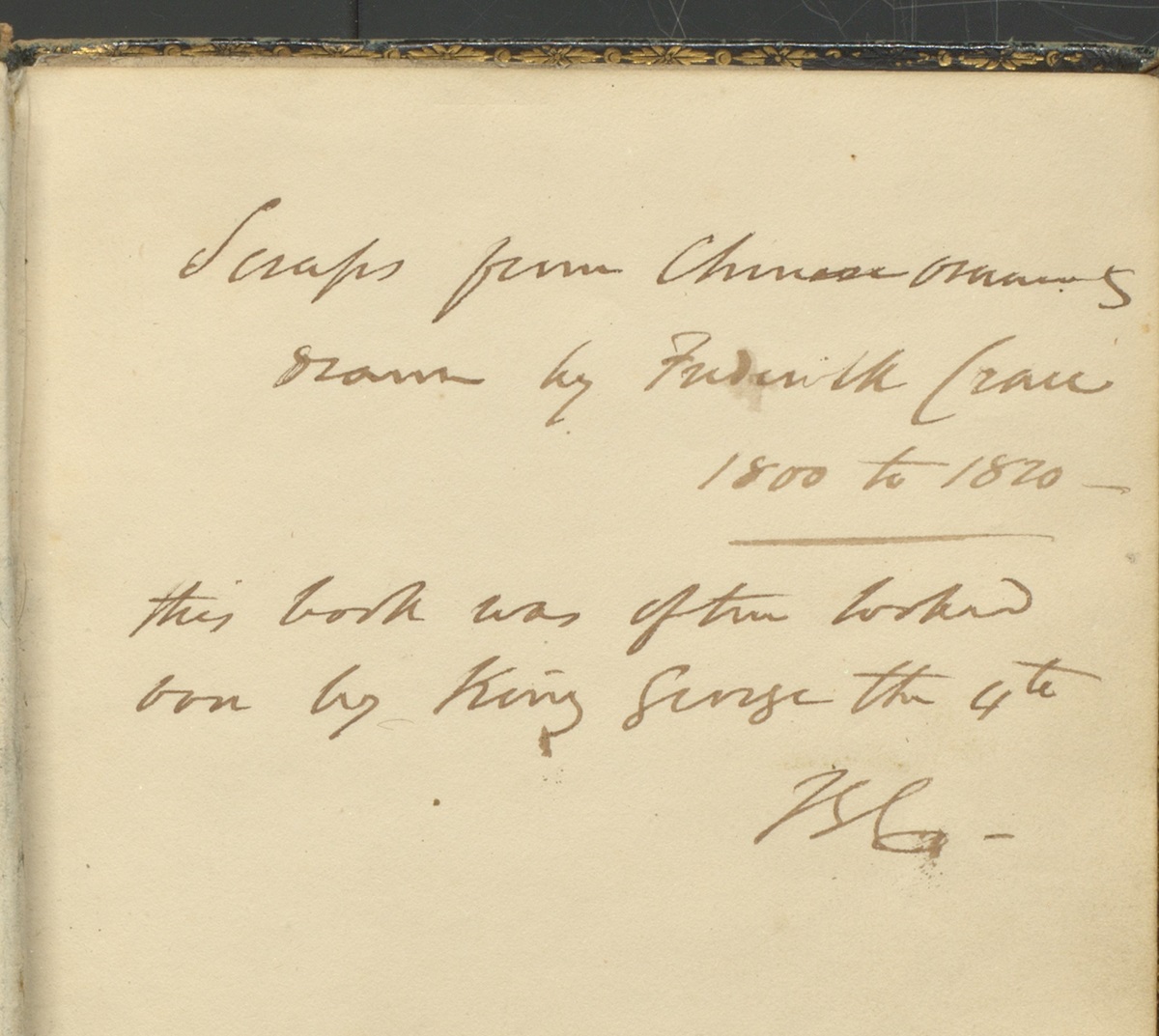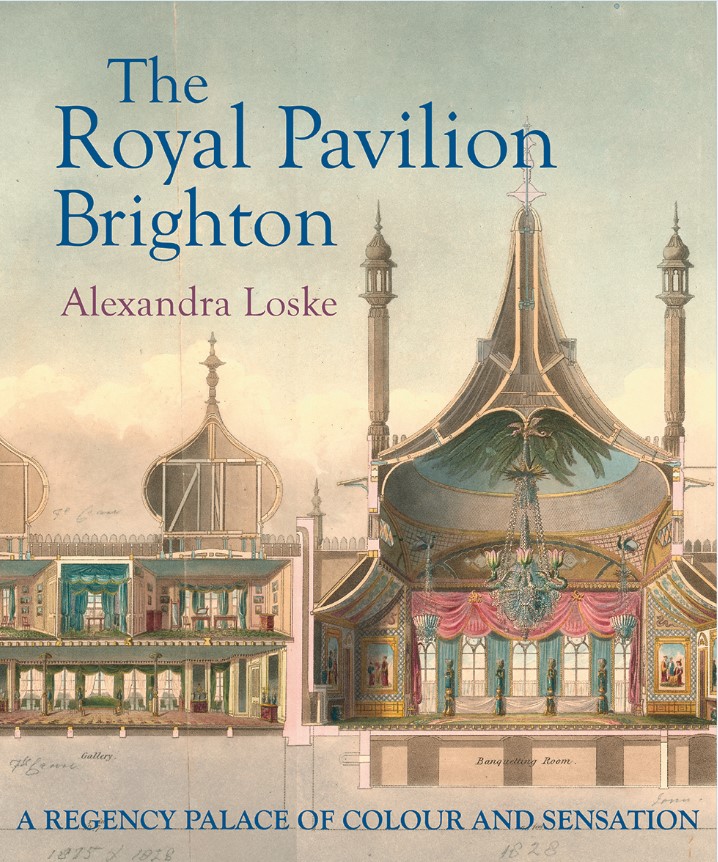The Dragon is in the Detail: Crace design drawings for the Royal Pavilion
I have just finished writing a large book about the Royal Pavilion’s interiors as first conceived (and frequently changed) by George IV. Text is only one part of any book on an art-historical topic, and apart from all the manuscripts and published sources I used for my research (many of which form part of the Royal Pavilion Archive), I also used the rich and varied body of early images related to the Pavilion, from amateur watercolours of the estate to architectural drawings, designs for decorative detail, and even discarded plans. Many of them are well known and have been published before, for example the stunning book by the architect John Nash, Views of the Pavilion in Brighton (1826), which comprises high-quality coloured aquatints and outline engravings of the Pavilion in the late 1810s and early 1820s.
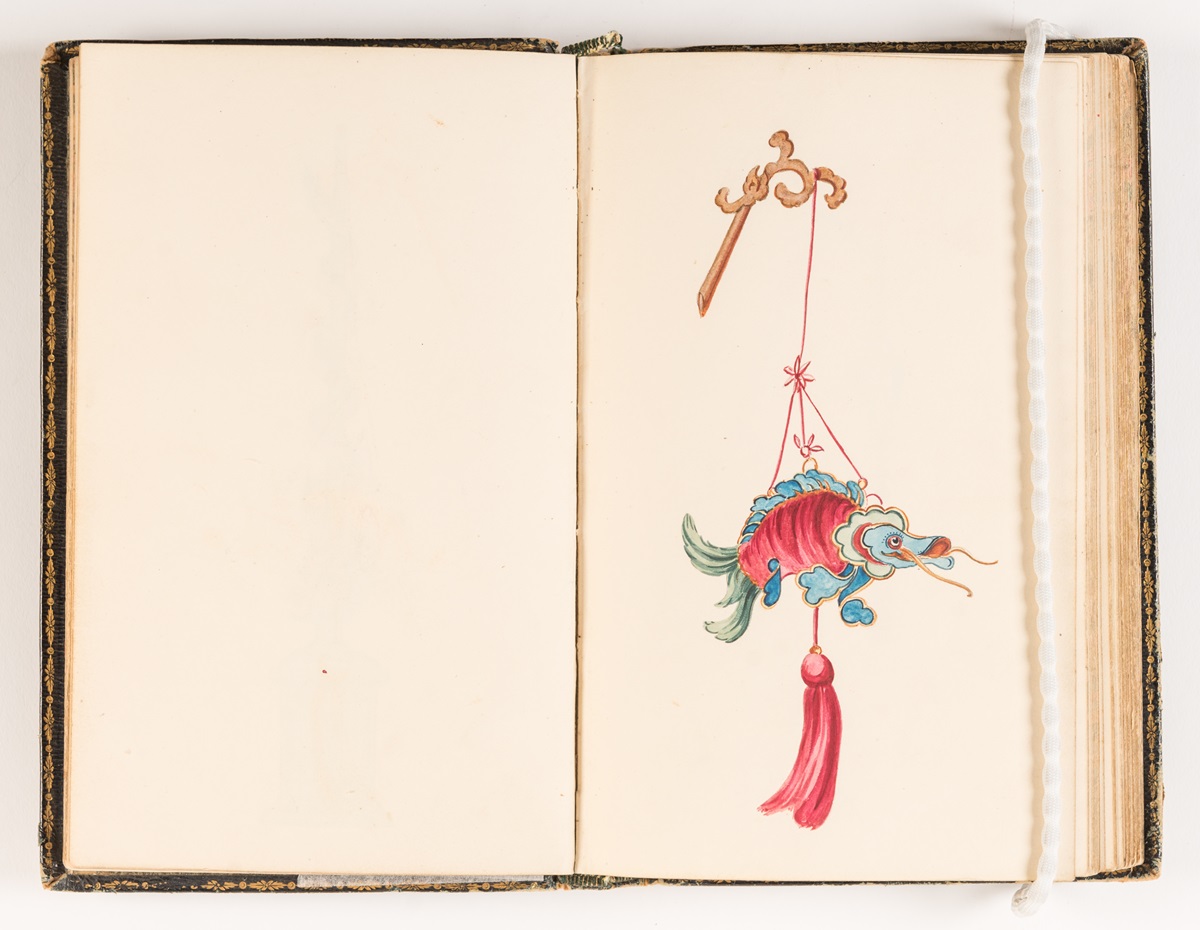
The Pavilion is a great example of interior decoration becoming a genre in its own right in the early nineteenth century, as advocated by designers such Thomas Hope and David Ramsay Hay. While Nash was responsible for the Pavilion’s distinctive Indian and Gothic exterior look from 1815 onwards, he had little to do with the interiors. Instead, George employed the designers John Crace (1754–1819) and his son Frederick Crace (1779–1859) from 1802, when he began to transform the Pavilion’s interiors. They were later joined by the hugely creative Robert Jones (active 1815–1835), about whom we sadly know very little. We do know a lot about the Craces, though. The family firm Messrs Crace & Sons worked at the Royal Pavilion between 1802 and 1823, and further redecoration and restoration work was carried out by John Dibblee Crace (one of Frederick’s grandsons) in the 1880s and 1890s, until the firm folded in 1899.
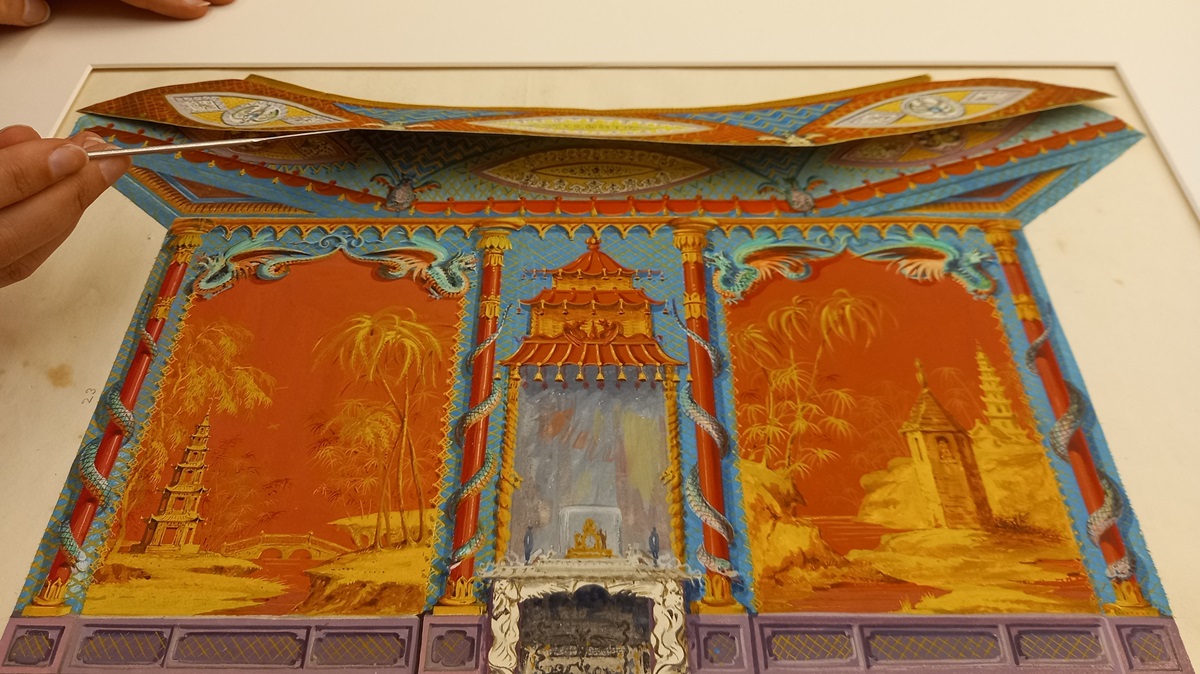
A significant body of Crace drawings relating to the Pavilion is in the Cooper-Hewitt Smithsonian Design Museum in New York, but we are very lucky to have around 230 loose sketches and a complete sketchbook in our collection. Most of these drawings are attributed to Frederick Crace, but some may just be by his father John. While our Crace materials rarely show complete designs for a room or a wall, they are nevertheless important pieces in the jigsaw of the development of the Pavilion. The highly detailed and brightly coloured drawings reveal that the Craces often copied directly from decorations on Chinese porcelain, wallpaper, Canton enamels, and embroidered textiles, with little deviation from the original colour schemes. They also used printed sources, such as illustrated books published by the artist William Alexander (1767–1816), who accompanied the Macartney Embassy to China in the 1790s, and by William Chambers (1723–1796) in the 1750s and ‘60s. In some cases, we can find a direct line from the original source via the Crace drawings to the final ornamental detail in the Pavilion, as for example in this sketch of Chinese mythological beasts, which the Craces copied from a plate published by William Alexander in 1805, showing a scene inside a Chinese temple. These motifs would eventually appear in adapted form on laylights upstairs in the Pavilion. It just goes to show that it is worth looking at the detail, whether you are searching for, dragons, Foo-hum birds, grotesque beasts, or writing a book.
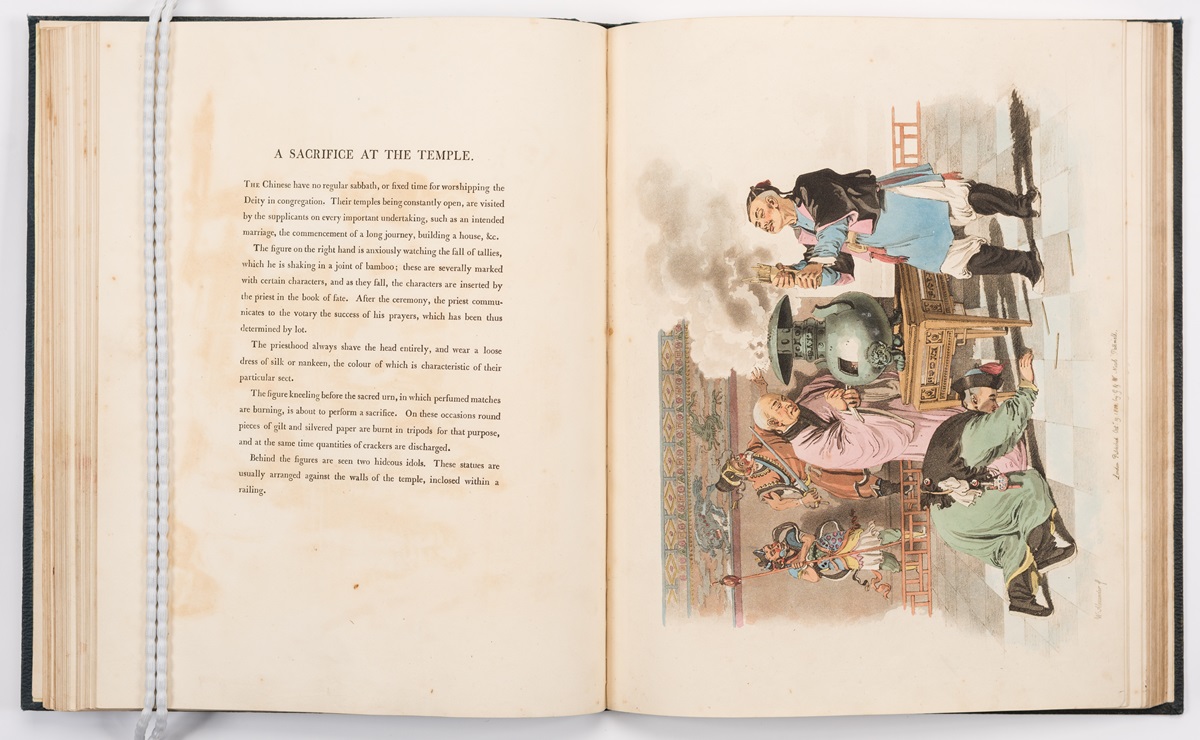
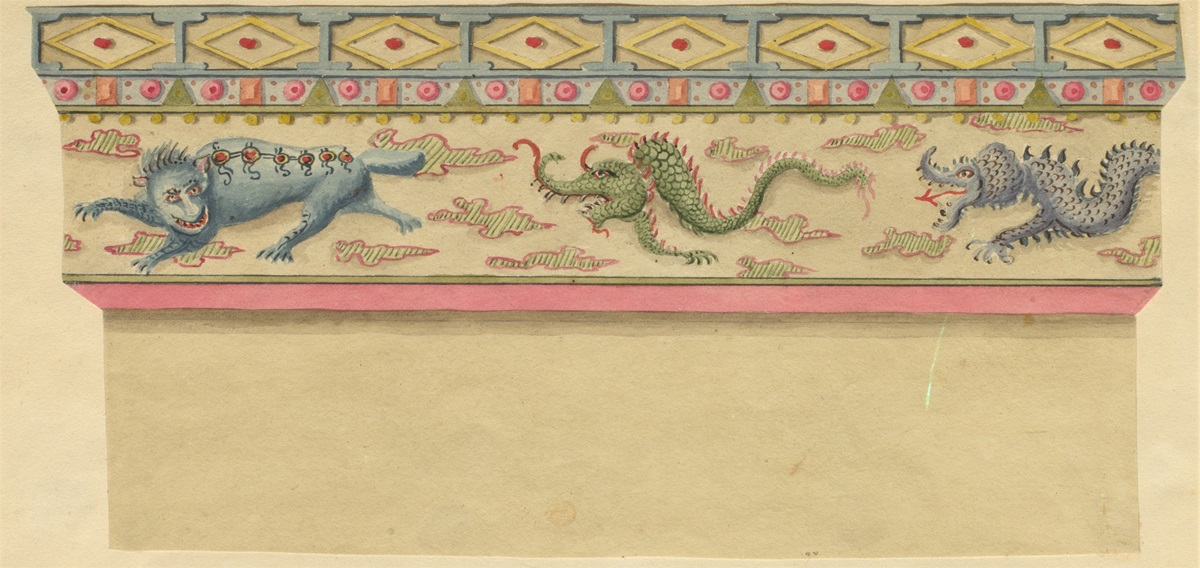
The small sketchbook is a particular gem. It contains 68 coloured designs from Chinese ornaments, dating from c1800 to 1820, and most of them were likely drawn by Frederick Crace. What makes it so important to us is that it offers a rare glimpse into George’s involvement with (and passion for) his Pavilion by the sea: We have no letters or comments from George about the Pavilion, but a note by John Gregory Crace (Frederick’s son) on the flyleaf of the sketchbook tells us that ‘This book was often looked on by George IV’. We can imagine George flicking through it and excitedly pointing at his favourite colour schemes, motifs and shapes, telling the Craces to use them in their designs. Our Crace sketches will feature prominently in my book, which will be published in June 2025 by Yale University Press, alongside examples from the Cooper Hewitt collection.
